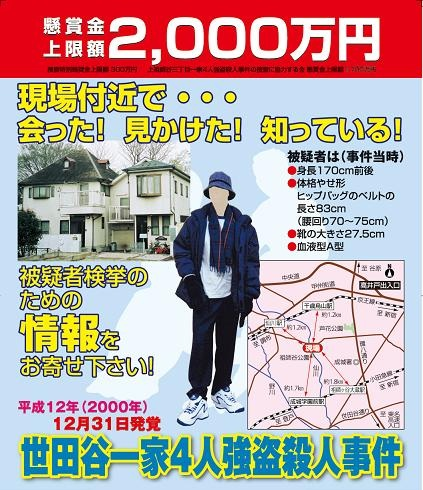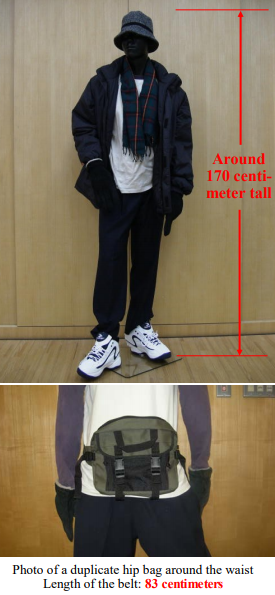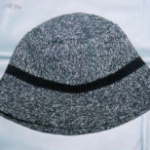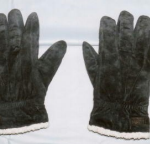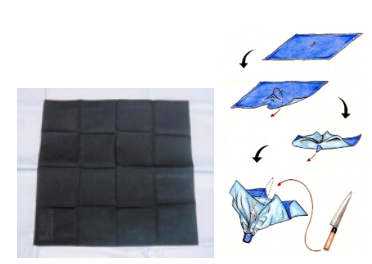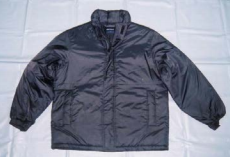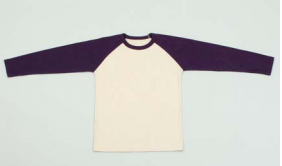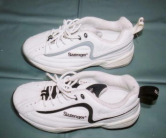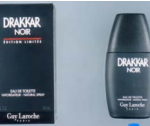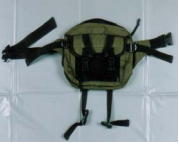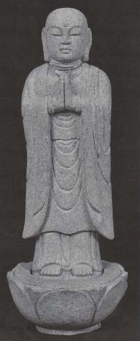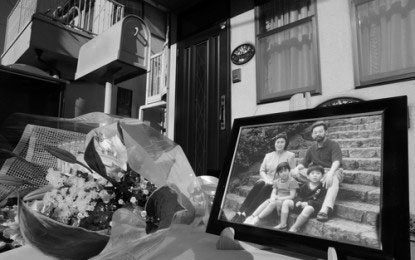By Khadija Rida
[PART 2, OF A TWO PART SERIES]
On December 30, 2000 the Miyazawa family were murdered in their own home in the Setagaya ward of Tokyo, Japan. To date, police have found over 12,545 pieces of evidence. Many pieces of evidence were left by the killer, such as fingerprints, footprints, feces in the bathroom, clothes, and the murder weapons (including a sashimi knife he bought and a knife found at the Miyazawa house). There was also blood and footprints that did not belong to any of the Miyazawas. However, to this day, the case remains unsolved. The following is a list of additional clues that were collected by police investigators.
Events after the day of the murder: December 31, 2000
-Near the Miyazawa house, after midnight, a taxi driver had picked up three passengers who were all middle-aged men that remained quiet during the whole journey. The taxi driver recalls this as very weird. It was past midnight and these three men were being dropped off at a nearby station not too far away. One of these men apparently had a wound on him that left a bloodstain in the back seat of the cab. However police tested the ”blood” and found out that it was only chocolate.
-At dawn a woman was driving past Soshigaya Park when a man jumped in front of her car lightly brushing it. She got out to check on him and saw blood on the back of his left hand.
-At 5:25am, a man in his thirties went into a medical office near Tobu-Nikko Station looking for treatment for a knife wound that was so deep that his bones could be seen. He left without saying his name.
-It was noted in some reports that the electricity on the first floor of the targeted house was on when the incident was discovered. According to the newspaper delivery man when he delivered the morning newspaper on the early morning of the 31st, the electricity at the entrance to the victim’s house was off. Another passerby testified that the lights in the victims’s house were turned off before dawn. However Haruko said that the lights were on when she visited.
-A man who looked about 30-years-old was seen on a rapid train arriving at Tobu Nikko Station at 5:26 pm. Witnesses said he was so deeply injured that his bones could be seen in his right hand. The man was said to be about 175 centimeters tall, and dressed in a black down jacket and jeans.
Evidence and further speculations about the suspect
-Mikio Miyazawa’s documents were in kanji. Kanji is one of the most complex writing styles in Japan, and is taught at an early age. It is speculated since the killer was able to read kanji, it must mean they were probably raised in Japan.
-The blood from the bandages found at the scene were tested, revealing that the killer was male with blood type A. Toxicology reports suggested that he had taken no drugs, and that he was a non-smoker.
-Footprints were found throughout the house. Near the bunk bed, outside the house, under the bathroom window and on the stairs. On the stairs the footprints switch position halfway up from the wallside to the handrail side. This stepping pattern is consistent with military training.
-Haruko had reported hearing a loud bang from the house at approximately 11:30pm. After testing what the sound might be, police discovered that it was the sound of the ladder that led to the loft being pulled down.
-The suspect’s fingerprints were found all around the house. His thumbprint had a unique swirl pattern with two lines on the center resembling a pig nose. His fingerprints were run through the Japanese criminal database but found no match. This means the perpetrator seemingly had no prior criminal record.
Clothes
The perpetrator had changed his clothes and left his outfit folded nicely. He probably
left wearing Mikio’s old jacket.
(The outfit the killer was wearing.)
-“Crusher hat”
A total of 3,465 hats of this kind were on sale nationwide between July 1998 and November 2000 and were sold for around ¥1,900 yen. Based on the seal tag, it is believed that this hat was sold after September 21, 1999. Primary location of sale in the Kanto region was Marufuru Corporation (M/X), Unique Co., Ltd., and Daisan Black Co., Ltd.
– Gloves (with poa)
He wore a pair of EDWIN gloves, which were 26 cm in size. (He did not use them while committing his crime.) Between 1998 and 2000, 10,755 pairs of these gloves were manufactured and were sold for around ¥1,980 yen. They were primarily retailed via JEANS MATE and Marufuru (M/X).
– Muffler / Scarf
The information on the manufacturer and retailers of the scarf has not been obtained, because there was no tag. It is 130 cm by 30 cm in size, which is often used by children of similar height, and fits around the average neck of teens. This suggests that the perpetrator may have used it from childhood thru adolescence. The scarf was composed of acrylic-fabric, with a green background color, featuring red, black, orange, and dark-green checks.
– Handkerchiefs
Between 1995 and 2000, a total of 66,500 black handkerchiefs of this kind (59,000 between 1998 and 2000) were manufactured and sold for ¥300 yen a piece. These handkerchiefs were retailed via MUJI retail stores
Two plain black handkerchiefs were found, recently washed and ironed. (Many people connect this with military training, since in the military you have to iron your clothes a lot. Others have theorized that he lived with a female caregiver at home.) One handkerchief was folded into a triangle, and had squeezed ends, so it is possible that it was used as a face mask. The other one was unfolded, and had a 3 cm cut in the center, allowing it to be used as a bag-like pouch to prevent injury and slippage. This method is similar to something done in fish processing plants. It is also similar to the way soldiers and gangs wrap knives during rituals and hunts in parts of the northern Philippines.
– Jacket: “Air Tech Jacket”
From October 2000 to the day of the murder, a total of 82,000 jackets of this kind, black and large sized, were sold nationwide (10,194 in Tokyo). It was priced at ¥3,900 to 5,900 yen and was sold at UNIQLO direct-run stores, as well as through mail order catalogues and on the Internet. In the pockets of the jacket left behind there were:
● sand from the coast of the Miura Peninsula (Yokosuka City)
● pollen of pomegranate or Zelkova plants
● dead leaves from Zelkova and Willow plants
● feces of birds smaller than sparrows
● soil particles that surround South Korea’s capital city of Seoul
– Raglan shirt
This shirt was interesting because of the blood stains on it. It was only available in Marufuru shops that also sold the types of gloves and hat found at the crime scene. 130 pieces were sold, but only 12 were identified. This shirt was also very popular among young people at the time.
– Shoes “Slazenger” (27.5 cm in size)
The shoes that the killer was wearing were identified through footprints. It is believed that the killer’s shoes were manufactured in Korea because the size of his shoe was marked with a Korean size code (KOR280). From October 1998 through November 2000, a total of 4,530 pairs were manufactured in South Korea. In Japan, they were sold for around ¥4,000 yen.
There is a possibility that the shoes were purchased in South Korea or acquired through parallel imports or individual imports.
– Perfume (DRAKKAR NOIR)
Manufactured by Guy Laroche in France, this “eau de toilette” has been on sale in Japan since around 1982. It was priced at around ¥3,000 for a 30 ml bottle.
Ingredients of this perfume were detected in the bag and on the handkerchiefs.
This perfume was also used by popular American professional skateboarders who were active in the 1980s.
– Hip Bag
A manufacturer in Osaka produced 2,850 bags of this kind. They were sold for ¥2,900 yen at discount stores in the Kanto region from September 1995 through January 1999.
● The bag was worn out, so it may have been used for a long time. The length of his hip bag belt was 83 centimeters but had been modified to fit a waist from 70 to 75 cm.
● Some evidence that was found was a piece of grip-tape used for the surface of skateboards.
● Trace elements of Drakkar Noir, the cologne found on the handkerchief.
● In the bag there were two strands of black hair that may belong to the killer. One of the
hairs was black and 2.5 cm long. The other hair was blackish brown and 1.5 mm long. It is believed that both hair strands were cut by hair clippers.
● Inside there was also a trace of a fluorescent red agent which is normally found in stage production. The police also found this agent in the family’s garage. However it was locked, and there were no traces that the killer had entered it. This raised possibilities that the killer had been here previously and/or that he works in some stage-related career. However that theory was soon eliminated when the two agents were found to be different. It was determined that the agent in the hip bag was a mark of a famous highlighter pen. This gave the possibility that the killer was a student during the hip bag sales period (around 1995-1999).
● The bag also contained different types of sand. One type is found in the Miura Peninsula and another is found in California—specifically near the Edwards air base.
The clothing items were all washed in hard water, while Japan uses a soft water system. This might mean that the perpetrator is of Korean heritage, or he had traveled there since Korea uses a hard water system.
From the style of the clothes and trace evidence, it is suspected that the killer was between 15 to 35 years old and is possibly of Korean heritage or had recently traveled there. At the time of the crime he was around 170 centimeters tall and was slim. He was probably right-handed and physically well built. He was probably a skateboarder since the brands he wore were popular among skateboarders and also because of the grains of sand. California is the birthplace of skateboarding and there are places where skateboarders gather in “Umikaze Park” on the Miura Peninsula, and competitions are held there frequently. Police investigated the stores that sold specific items, however they found no further leads to the suspect.
Placement of the Jizo Statue
On April 9, 2001 (after 100 days) a small Buddist statue was found near the home less
than a mile away. The statue was Jizo, a Buddhist wisdom deity, or bodhisattva. In the Eastern Asian schools of Buddhism, Jizo is said to protect children in the afterlife who die before their parents, and protects children in the afterlife keeping them safe from demons as they ascend to the spirit world. The chinese character for “6” was carved on the bottom of the Jizo and the top of the pedestal. This was examined as evidence to see if it was related to the killer. However nothing was found to help them further in the investigation.
Fingerprints and DNA
In 2006 the DNA of the criminal was tested again using DNA profiling. This showed that the criminal was probably of mixed race. The maternal DNA indicated that his mother was of European descent, possibly from a South European country near the Mediterranean or Adriatic Sea. It is considered possible that the European maternal DNA comes from a distant ancestor from the mother’s line, rather than from a fully European mother. His paternal DNA indicates a father of East Asian descent. Analysis of his Y-chromosome showed the Haplogroup O-M122, a common haplogroup distributed in East Asian peoples, appearing in 1 in 4 or 5 Koreans, 1 in 10 Chinese, and 1 in 13 Japanese. These led police to believe that the killer’s father is more likely Korean or Chinese. These results also led the Tokyo Metropolitan Police to seek assistance from the International Criminal Police Organization because the killer may not be Japanese or living in Japan. However the possibility that the criminal is a Japanese native is not denied.
It’s been about 20 years since the incident, and no likely suspect has yet been caught. The case is now in the hands of Manabu Ide, from Tokyo Metropolitan Police Special Investigative Task Force, who remains confident that the mysterious crime will be solved. So let’s just hope he is correct, and that justice will eventually be served for the Miyazawa family and their loved ones.
